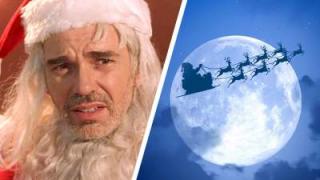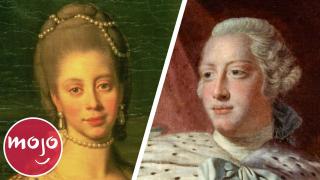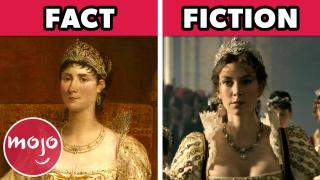Top 10 Myths About World History

Even serious history buffs may not know that some of these facts are actually myths. From Viking helmets, to who invented Santa Claus, to the origins of pasta, lets set the record straight. WatchMojo counts down the Top 10 Common Misconceptions About World History.
Special thanks to our user Trigger51 for suggesting this idea! Check out the voting page at WatchMojo.comsuggest/Top+10+Common+Misconceptions+About+World+History.
Top 10 Common Misconceptions About World History
Top 10 Goals in World Cup History
Even serious history buffs may not know that some of these facts are actually myths. Welcome to WatchMojo.com, and today we’ll be counting down our picks for the Top 10 Common Misconceptions About World History. For this list, we’re looking at commonly held beliefs about various historical events that are completely untrue.
#10: The Vikings Wore Horns on their Helmets
Top 30 Moments That Made The World STAND STILL
Horned helmets have been worn by various populations throughout history, but curiously enough, the vikings weren’t one of them. Even though they have become the culture with which these helmets are most strongly associated, there is not actual historical proof of them ever wearing them. It seems as though the 19th century opera cycle Der Ring des Nibelungen is to blame for this one! In similar headgear misconceptions, cowboy hats were nowhere near as ubiquitous in the Old West as they’re usually made out to be. At the time, cowboys would actually wear hats more similar to bowlers or derby hats.
#9: Santa Claus Was Invented by Coca Cola
The Science of Santa Claus
Many people think that the modern image we have of Santa Claus, a jolly white bearded man in a red suit, was actually a total construction by The Coca Cola Company in the 1930s. While it is true that Coke began using the image of Santa Claus in their marketing at that time, lots of other companies has already used the visual representation of the Santa we know and love in their own ads. Over the years, Santa Claus, or Saint Nicolas, had been given different physical characteristics, but by the 30s his modern iteration had already been established in pop culture.
#8: Marco Polo Brought Pasta to Italy
In the 13th century, Italian merchant Marco Polo did indeed travel to China, and recorded his journeys in his “Book of the Marvels of the World”. Because he describes something similar to lasagna in these accounts, many credit him with having brought the concept of pasta back to his home of Italy around that time. However, Arabic peoples actually introduced the idea many centuries earlier while they were invading Sicily. And for that we have to thank them, because where would we be without pasta?
#7: Immigrants' Surnames Were Changed at Ellis Island
If you’ve watched enough historical fiction movies, you’ve probably witnessed the common trope of immigrants arriving in the new world trying to change their fortune. They have to pass through officials at Ellis Island who decide their names aren’t “American” enough and therefore change them to something more homogenous. The thing is though, no records were even kept at Ellis Island, and they weren’t creating any paperwork with new names or in fact, any information at all. At the time though, anyone could change their name in New York simply by using whatever name they wanted, so your family’s story of a forced name change is most likely a myth.
#6: Columbus Discovered That the Earth Was Round
When Columbus sailed the ocean blue in 1492, some say that he set out to prove that the world was round, and that he surprised many when he returned with this information. In fact, according to one historian, “no educated person in the history of Western Civilization from the third century B.C. onward believed that the Earth was flat.” Key figures like Pythagoras and Aristotle had discovered that the earth was not flat nearly two thousand years earlier! In the Middle Ages, this information was still retained by most.
#5: Life Expectancies Were Extremely Low in the Middle Ages
Top 10 Real-Life Royal Romances
Many people think of the Middle Ages as a dark time where people could barely make it into their 30s before kicking the bucket. In fact though, many commonly held life expectancy facts are based on high infant mortality rates, not to mention major diseases like the bubonic plague. It’s hard to come up with exact numbers, but one source says that a man who had made it to the age of 21 without succumbing to childhood illness was likely to live to 64. Also, these “dark ages” weren’t dark everywhere. Outside of Europe, many societies were thriving and innovating.
#4: Albert Einstein Failed Math
When people are trying to prove that you can always succeed even after failure, they often cite the fact that Albert Einstein failed math before going on to become one of the most important mathematicians of all time. While this may seem inspirational, it’s totally made up. In fact when Einstein himself heard this rumor he said, “"I never failed in mathematics... Before I was fifteen I had mastered differential and integral calculus." And you know what, we believe him! He did fail the entrance exam for Zurich Polytechnic, but he was taking it early and did just fine on the math section.
#3: Napoleon Bonaparte Was Short
Joséphine de Beauharnais: The True Story of Napoleon's Wife
Unfortunately for him, this rumor was unintentionally perpetuated by Napoleon himself. Upon his death, officials recorded his height as 5 feet 2 inches, which was admittedly short for a man, even in the early 19th century. Here’s the thing though, that measurement was in “French feet” which was part of the “Mesures usuelles” that Napoleon himself introduced! In our modern measurements, this would translate to approximately 5 feet 7 inches, which is slightly under average today, but in the 1800s would have been totally normal.
#2: Women Were Burned at the Stake in Salem
Top 10 Women Who Made World-Changing Discoveries
Sadly, the Salem Witch Trials were very much real, but the manner in which women were punished for witchcraft is not what most people think. The pervasive image in pop culture is of alleged “witches” being burned at the stake, but in fact this never once happened in Salem. Twenty people in total were executed after the trials (including some men), but all of them, with one exception, were killed by hanging. Some of the accused also died in prison. We’re not sure where this rumor came from, but it sure did stick!
#1: Marie Antoinette Said “Let Them Eat Cake.”
What is Marie Kondo's KonMari Method?
This is one of those pop culture myths that people have speculated must be false, but we’re here to definitively tell you it’s not true. In fact, we can trace the exact source of this rumor. In 1765 Jean-Jacques Rousseau completed his autobiography, “Confessions”, in which he tells a story of a “great princess” who said, "Then let them eat brioches” when she heard that the peasants had no bread. It then went on to be attributed to Marie Antoinette, even though it was written years before she became queen or even came to France. In actuality, Marie Antoinette expressed sympathy with the lower classes and would likely not say something so callous.








